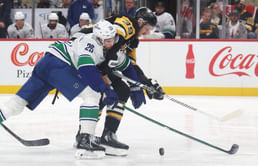
The 2025 Stanley Cup Playoffs will begin on April 19 and end by June 23. The tournament decides the NHL champion for the 2024–25 season. Sixteen teams qualify for the playoffs, wherein the top three in each division earn automatic spots. Two wild cards from each conference fill the rest. Matchups are set in a bracket.
Each round is best-of-seven. Division winners face wild cards, while second- and third-place teams in each division face each other. Winners advance through the Second Round, Conference Finals, and then the Stanley Cup Final. Home ice is based on regular-season records.
NHL playoff seeding
In the 2025 NHL Stanley Cup Playoffs, the Eastern Conference Final features the Florida Panthers (3rd seed in the Atlantic Division) against the Carolina Hurricanes (2nd seed in the Metropolitan Division). The series will begin on May 20, with Carolina hosting Games 1 and 2. Games 3 and 4 will take place in Florida, and if necessary, Games 5 and 7 will be in Carolina, while Game 6 will be in Florida.
In the Western Conference Final, the Edmonton Oilers (3rd seed in the Pacific Division) face the Dallas Stars (2nd seed in the Central Division). The series will start on May 21 in Dallas, which will also host Game 2 and possibly Games 5 and 7. Games 3 and 4 are in Edmonton, with Game 6 also scheduled there if needed.
Here is the seeding for the 2025 NHL Stanley Cup Playoffs Second Round:
EASTERN CONFERENCE
Florida Panthers (3A) vs. Carolina Hurricanes (2M)
Game 1: Panthers at Hurricanes, Tuesday, May 20, 8 p.m. ET Game 2: Panthers at Hurricanes, Thursday, May 22, 8 p.m. ETGame 3: Hurricanes at Panthers, Saturday, May 24, 8 p.m. ETGame 4: Hurricanes at Panthers, Monday, May 26, 8 p.m. ETGame 5: Panthers at Hurricanes, Wednesday, May 28, 8 p.m. ETGame 6: Hurricanes at Panthers, Friday, May 30, 8 p.m. ETGame 7: Panthers at Hurricanes, Sunday, June 1, 8 p.m. ET
WESTERN CONFERENCE
Edmonton Oilers (3P) vs. Dallas Stars (2C)
Game 1: Oilers at Stars, Wednesday, May 21, 8 p.m. ET Game 2: Oilers at Stars, Friday, May 23, 8 p.m. ETGame 3: Stars at Oilers, Sunday, May 25, 3 p.m. ETGame 4: Stars at Oilers, Tuesday, May 27, 8 p.m. ETGame 5: Oilers at Stars, Thursday, May 29, 8 p.m. ETGame 6: Stars at Oilers, Saturday, May 31, 8 p.m. ETGame 7: Oilers at Stars, Monday, June 2, 8 p.m. ET
How are NHL playoff seeds determined?
NHL playoff seeds are determined by division rankings rather than just points. The top three teams from each division automatically qualify and are seeded first through third within their division. Each conference also includes two wild-card teams, which are the next two best teams that did not finish in the top three of their division.
Among the division winners, the team with the better record becomes the top seed in the conference and plays the lower-ranked wild card team (8th seed). The other division winner is the 2nd seed and plays the higher-ranked wild card team (7th seed). The second and third-place teams in each division are matched up against each other in the first round. Wild card teams are always seeded 7th and 8th, regardless of point totals compared to other teams.
NHL playoff Rules
The NHL playoffs feature 16 teams: the top three teams from each division and two wild cards per conference. Seeding is based on regular-season points, using tiebreakers like regulation wins, ROW, total wins, head-to-head points, goal differential, and goals scored. The bracket is division-based: division winners face wild cards, while second- and third-place teams in each division play each other.
All playoff rounds are best-of-seven. Home-ice advantage goes to the team with the better regular-season record. There is no reseeding in the final. In playoff overtime, tied games go to 20-minute 5-on-5 sudden-death periods. Overtime continues with full periods until a goal is scored, as per Yahoo.
Read More: NHL Playoff Rules
FAQ's On NHL Playoffs
A. The NHL playoffs will start on 19th April and last till mid-June.
A. Sixteen teams qualify for the NHL Playoffs.
A. Re-seeding in the NHL playoffs ensures that the top seed plays the lowest remaining seed. However, this practice has been discarded in recent years.
A. The NHL playoffs consist of four rounds, with each round being a best-of-seven series format.
A. The first team ever awarded the Stanley Cup was the Montreal Amateur Athletic Association in 1893.









